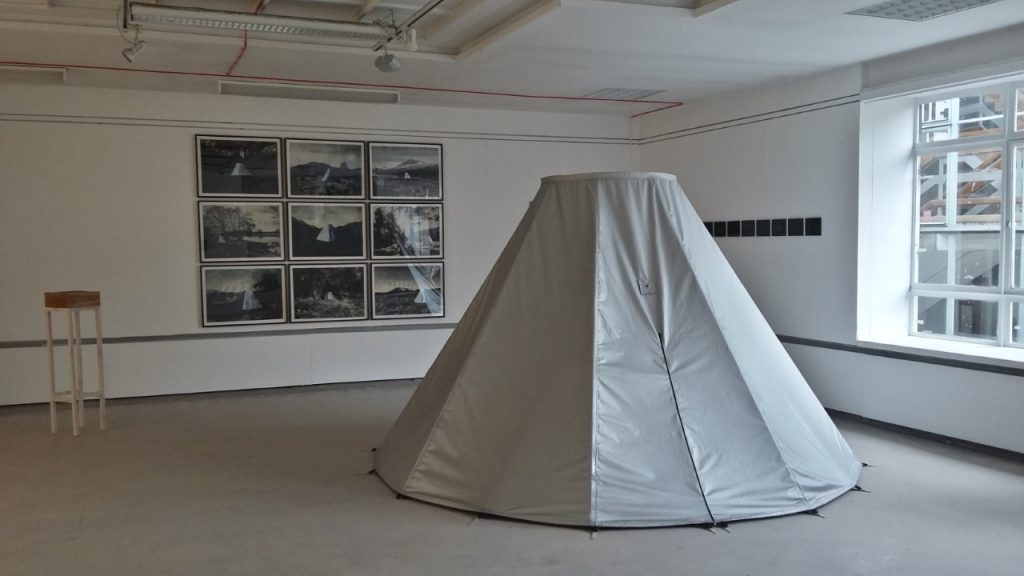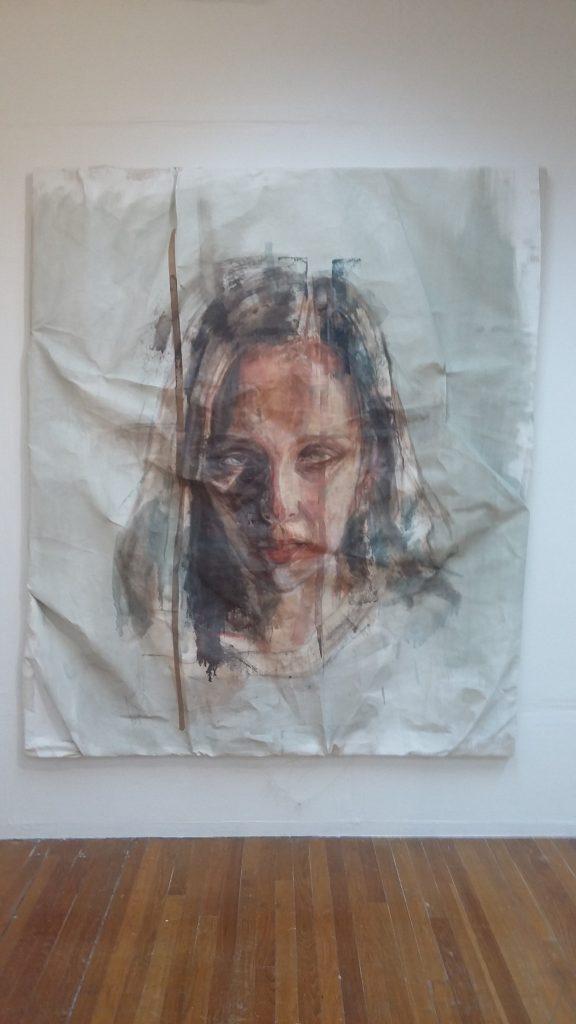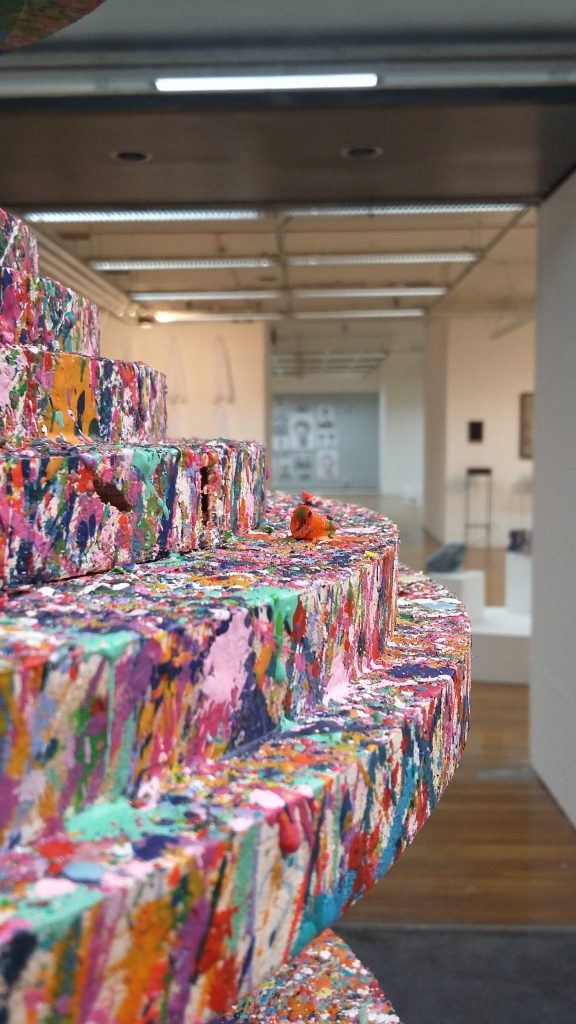DJCAD Degree Show 2016: Fine Art (General Course Studios)
When Degree Show time of year rolls around, a peculiar mix of emotions seem to linger within the walls of University art buildings. The sense of release is almost palpable; an enormous bubble of built-up tension and stress over the last few months having finally burst, leaving the products of true inspiration, hard graft, creative problem-solving and sheer drudgery spread throughout the exhibition. The pieces which really stood out tended to show an ability to skilfully address the universal through the specific, an innate, sensitive and personal relationship with their chosen material, and a skilled, crafted aspect to the resolution of their work. The following works are ones that continue to resonate long after their initially compelling visual impact.
 Jasmine Summerton’s works focus on simply being in the Cairngorms National Park, with “Enter, observe, notice, perceive, behold” as her self-styled motto for her project. A collection of prints, a hand-made compass and observatory, and artist’s books collectively indicate a deep, slow methodology. The observatory, made in silver, lightfast and reversible material stands quiet in the room, majestic and mute yet looking like a curious intergalactic vessel. Intimate photographic prints on aluminium afford us small, obscured glimpses into the mystery of the natural wilderness, whilst a series of nine lithographic prints feature the observatory in nine different places across the National Park. Meditative and thoughtful, Summerton’s work speaks of the magnificent and sublime aspects of a dramatic, evolving landscape to which we are humbled to bear witness: the stark isolation of the observatory amidst dramatic scenery highlights our alien-ness, our desire to belong but also not belonging, and also the ambivalence of the human presence in the landscape.
Jasmine Summerton’s works focus on simply being in the Cairngorms National Park, with “Enter, observe, notice, perceive, behold” as her self-styled motto for her project. A collection of prints, a hand-made compass and observatory, and artist’s books collectively indicate a deep, slow methodology. The observatory, made in silver, lightfast and reversible material stands quiet in the room, majestic and mute yet looking like a curious intergalactic vessel. Intimate photographic prints on aluminium afford us small, obscured glimpses into the mystery of the natural wilderness, whilst a series of nine lithographic prints feature the observatory in nine different places across the National Park. Meditative and thoughtful, Summerton’s work speaks of the magnificent and sublime aspects of a dramatic, evolving landscape to which we are humbled to bear witness: the stark isolation of the observatory amidst dramatic scenery highlights our alien-ness, our desire to belong but also not belonging, and also the ambivalence of the human presence in the landscape.
In the gallery space below, Gavin Donaldson’s four large canvases command considerable attention and contemplation. The artist’s bold compositional decisions and muted palette is reminiscent of Nathan Ford’s portraits; they measure over 1.75m wide by 2m high. Two particularly successful close-up pain tings manage to strike a perfect tension between two and three dimensions, whilst keeping within the integrity of their canvases’ four corners. Donaldson has loosened, pulled and puckered his canvas, manipulating these folds so as to integrate with the contours and planes of the pictured face. As one moves in front of the paintings, a crease across the cheek bone, a protruding lip, a receding eye all virtually fragment and distort these intense portraits. Donaldson’s clear technical ability, combined with a loose handling of paint and subtly refined use of mixed media all point to a clear finesse with his materials. The crumpled quality of the paintings evokes encountering a lost, creased image on a street; their stillness resonates as the images slowly takes shape before you.
tings manage to strike a perfect tension between two and three dimensions, whilst keeping within the integrity of their canvases’ four corners. Donaldson has loosened, pulled and puckered his canvas, manipulating these folds so as to integrate with the contours and planes of the pictured face. As one moves in front of the paintings, a crease across the cheek bone, a protruding lip, a receding eye all virtually fragment and distort these intense portraits. Donaldson’s clear technical ability, combined with a loose handling of paint and subtly refined use of mixed media all point to a clear finesse with his materials. The crumpled quality of the paintings evokes encountering a lost, creased image on a street; their stillness resonates as the images slowly takes shape before you.
 Another highly notable mention is the art of Melissa Bititci. The sculptor’s concentric splices of wood, suspended from the ceiling and splattered in a frenzy of colours made from melted children’s crayons are a sensual delight to behold. The shapes evoke East Asian temple adornments and the sparsity of their curation, with each being presented in a totally different way, works well. In addition, don’t miss Alexander Allan’s comprehensive, performative and political works and Laura Brown’s photography; both are of interest and show great potential.
Another highly notable mention is the art of Melissa Bititci. The sculptor’s concentric splices of wood, suspended from the ceiling and splattered in a frenzy of colours made from melted children’s crayons are a sensual delight to behold. The shapes evoke East Asian temple adornments and the sparsity of their curation, with each being presented in a totally different way, works well. In addition, don’t miss Alexander Allan’s comprehensive, performative and political works and Laura Brown’s photography; both are of interest and show great potential.
Overall, the whole exhibition shows a general curatorial strength that includes well-devised thematic links between works, for example transitions between pieces linking the city, nature and the body as a performative arena. Sadly, there are far too many works to be able to comment upon here, but that doesn’t matter. What does matter is the time and attitude you bring in getting to know and understand the purposes, ideas, materials and complexities of the works in front of you when you enter DJCAD. The works on display have been well thought-out and passionately handled, and it is a privilege to able to engage with them.
Ginny Elston

Leave a Reply